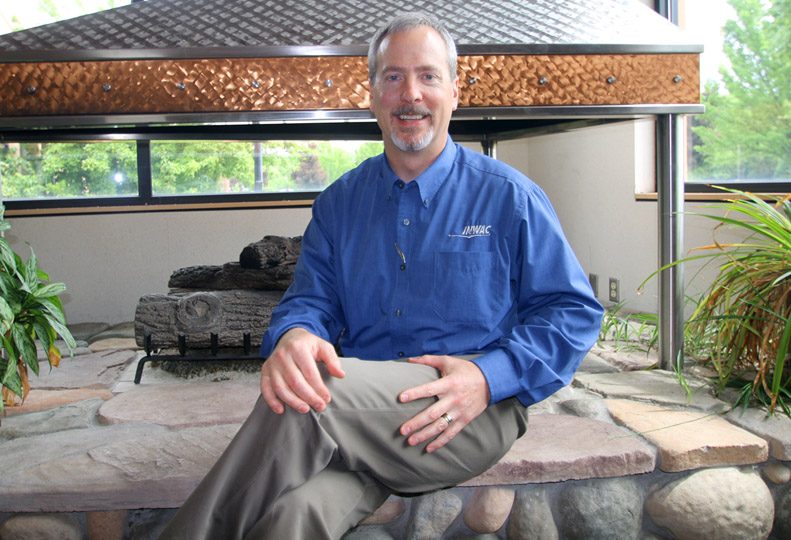
Home » Inland Northwest aerospace group looks to elevate its profile
Inland Northwest aerospace group looks to elevate its profile
INWAC wants to engage members more actively

June 22, 2017
Boasting a membership that extends from the Cascade Mountains to Bozeman, Mont., the Inland Northwest Aerospace Consortium says is stepping up its efforts to more actively engage its current members while seeking to recruit more.
“Our total membership list is 300 to 400 different companies, but the more active members—those more regularly engaged—is around 100,” says aerospace consortium Chairman Greg Konkol, who also is president of Liberty Lake-based AccraFab Inc., a precision sheet metal fabricator.
Through the years, the aerospace consortium has partnered with Idaho Aerospace Alliance, Pacific Northwest Aerospace Alliance, Spokane International Airport, Spokane County, the Port of Moses Lake, North Idaho College, and Spokane Community College.
The aerospace consortium, which doesn’t have its own physical office space, was created by the former Spokane Area Economic Development Council in 2006. The nonprofit’s mission is to develop and promote collaboration between aerospace manufacturers and service providers across the Inland Northwest, says Staci Nelson, who has been the organization’s executive coordinator for a year.
“INWAC was then rolled under the GSI (Greater Spokane Incorporated) umbrella in 2013 and became an independent 501(c)6,” Nelson says. Under the rules of a 501(c)6, all of the nonprofit’s earnings must be reinvested into the organization and cannot benefit individual members.
“A 501(c)6 is more self-serving than a 501(c)3. Our revenue is coming solely from member organizations and not a broader community of private donors,” she says.
Top membership level, called program integrator, costs $2,500 per year. Program integrators lead and participate directly in the organization’s business development efforts, including sales and marketing meetings and events, such as aerospace trade shows.
Companies must have an active presence within the consortium’s service area and must be AS9100 certified, which is a widely adopted quality management standard for the aerospace industry.
Manufacturer and service provider memberships are available to companies that are involved directly in the manufacturing and production of aerospace parts, systems, or components, or those that provide direct services to the aerospace industry such as coating and finishing.
The membership cost is $1,500 per year for companies with more than 50 employees and $1,000 for companies with fewer workers.
In an effort to draw more interest, the consortium two months ago created a $145 supporting membership class for companies, organizations, and individuals that promote or contribute to the aerospace sector here. Supporting members may attend the nonprofit’s meetings and events and serve on advisory boards, but don’t participate in sales and marketing meetings and events.
Nelson says the organization entered 2017 with the goal of expanding awareness of aerospace manufacturing and services in the region.
At the direction of Konkol, and the consortium’s six-member board, Nelson has been raising awareness in the Puget Sound region about the Inland Northwest’s aerospace industry and actively recruiting companies to relocate east of the Cascades.
“The cost of real estate and traffic and congestion are a real obstacle to manufacturing on the West Side,” Konkol says. “We see a real opportunity now to have conversations with those manufacturers about relocation.”
At the consortium’s annual I-90 Corridor Aerospace Conference & Expo near the end of May, John Byrne, who serves as vice president of aircraft materials of structures for Boeing Co., told attendees of a new strategy the company will employ that industry representatives here think will give Inland Northwest manufacturers a boost in business, Konkol says.
“The commercial aerospace industry has largely been a duopoly between Airbus and Boeing,” Konkol says. But the emergence of private aerospace companies and China’s state-supported aerospace industry have increased global competition, he says.
“At his address, Byrne asked the audience, ‘Who got online to try to find the most expensive ticket they could find to get here?’’’ Konkol says.
He adds, “Competition in the industry for business is fierce right now.”
In response, Konkol says Byrne announced that Boeing, for the first time in company history, will start reaching out directly to tier-two and tier-three aerospace companies for work orders to eliminate wasted time and improve communications.
Major manufacturers, such as Airbus and Boeing, are classified as tier-one manufacturers, while AccraFab, Altek Inc., and Multifab Inc. here, for example, are just a few of the many regionally recognized tier-two manufacturers, based on work orders and annual revenues, Konkol says.
Examples of tier-three companies include Spokane-based Novation Inc., which does precious metal plating, and Eclipse Printing Inc., which manufactures nameplates, labels, and decals for aircraft interiors, he says.
He says the large manufacturers, such as Airbus and Boeing, have always used other tier-one aerospace companies to communicate what they need from tier-two and -three suppliers. It’s a time-consuming process where, in the end, the big manufacturer spends less time engaged with those further down the supply chain, he says.
“Every point of communication is an opportunity for miscommunication,” Konkol says. “Boeing wants to have direct communication with tier-two and -three companies.”
“In the Inland Northwest, we’re heavy with tier-two and tier-three companies, so the fact Boeing is going to do this will provide us with additional opportunities to interact with them. This is a fairly significant change for Boeing,” he says.
Latest News Up Close Technology
Related Articles
Related Products
Related Events



![Brad head shot[1] web](https://www.spokanejournal.com/ext/resources/2025/03/10/thumb/Brad-Head-Shot[1]_web.jpg?1741642753)
